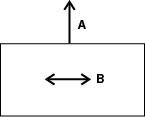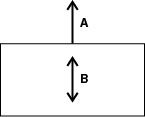Card stock
Card stock
is a rigid, stiff material that varies based on the way it is manufactured. Orientation of paper fibers (grain direction), moisture content, thickness, texture, and other properties can significantly impact printing. Preprinting, perforation, creasing, and other features common to forms can impact printing, too. For example, preprinting introduces semiliquid, volatile components that must withstand the high temperatures used in laser printing. Perforation and creasing may cause nesting or interlocking, which can cause paper jams and double-sheet feeds.
In general, we recommend a single-ply construction of 100 percent chemically pulped wood with a vellum finish. Before purchasing large quantities of card stock, make sure that you test samples of the print material in your printer.
Card stock guidelines
-
Set the size, type, texture, and weight in the Paper menu to match the card stock loaded in the tray.
-
Print samples on the card stock being considered for use before buying large quantities.
-
Preprinting, perforation, and creasing may significantly affect the print quality and cause jams or other paper feed problems.
-
Do not use preprinted card stock manufactured with chemicals that may contaminate the printer.
-
Use grain short card stock when possible.
-
Flex, fan, and align the card stock before loading.
-
Do not use creased card stock. It may cause paper jams.
-
Smoothness of 50 Sheffield points is optimal for color laser printers.
-
Smoothness of 150–250 Sheffield points is optimal for mono laser printers.
-
Do not use card stock that has offset powder on the surface.
Card stock characteristics
Weight
The weight of card stock significantly affects the print quality and feed reliability of the stock. For more information, see
Basis weight
.
Not all printers are able to print on cover stock. Cover stock is usually thicker and not able to make the turns in the printer paper path, resulting in paper jams and misfeeds. Also, when using a laser printer, toner is pulled onto the paper through an electrical charge. If the paper is too thick, then there may not be enough voltage to pull the toner onto the paper properly, resulting in poor print quality.
Depending on your printer model, material thicker than 0.30 mm (0.012 in.) may present feed reliability problems, and material thicker than 0.17 mm (0.007 in.) may reduce print quality. Contact your supplier to determine the weight of any card stock you currently use.
For more information about the card stock weights your printer supports, see the individual printer specifications in this document.
Grain orientation
Grain
refers to the alignment of the paper fibers in a sheet of paper. Grain is either grain short, running the width of the paper, or grain long, running the length of the paper.
The orientation of the grain contributes to the rigidity of card stock and affects feed reliability. The recommended grain orientation depends on the weight of the card stock and whether the printer feeds the paper short edge first or long edge first. For lighter card stocks, we recommend grain long to reduce potential curl problems. Curl may decrease the ability of the form to move reliably through the printer.
Most printers feed paper short edge first. If your printer supports larger paper sizes, such as 11 x 17 in. or A3, it may feed some paper sizes long edge first. For more information, see the documentation that came with your printer.
For materials fed short edge first
|
Grain short is recommended for stock heavier than 135 g/m
2
.
|
Grain long is recommended for stock lighter than 135 g/m
2
.
|
|
|
|
For materials fed long edge first
|
Grain long is recommended for stock heavier than 135 g/m
2
.
|
Grain short is recommended for stock lighter than 135 g/m
2
.
|
|
|
|
For more information about the recommended grain direction for card stock, see
Printer-specific paper support
.
Coatings
Surface texture and coatings on card stock significantly affect toner adhesion (fuse grade), print quality, and feed reliability. We recommend a vellum finish for the best printing performance. We do not recommend glossy coatings and slick surfaces or surfaces that mimic laid finishes (glossy paper, not glossy card stock, is acceptable for some printers). Paper smoothness also affects print quality. If the paper is too rough, the toner does not fuse to the paper properly. If the paper is too smooth, it can affect feed reliability. We recommend smoothness to be from 50 to 300 Sheffield points (50 Sheffield is optimal) for color laser printers. For mono laser printers, we recommend 150–250 Sheffield points. Using media higher than 300 Sheffield could result in printing degradation.
For more information about the individual printer Sheffield recommendations, see
Printer-specific paper support
.
Offset powders
We do
not
recommend using offset powders or other foreign materials to speed drying. Offset powders are used by print shops to prevent printed pages from sticking together. Powder is usually sprayed on the printed page right before it reaches the stacker on the offset printing press. This powder provides an intermediate layer between two sheets of paper, preventing ink from transferring from one sheet to another.



